|
The title of this blog comes to me from an old AC/DC song. No, not some tune that an electrician sings on the job. I'm talking about the boys from Down Under. It couldn't be more appropriate for the next few pictures. At the rate I am finding this kind of stuff out there does anyone really care about doing it right? Now some of these photos in this and previous blog entries were done by homeowners trying to save a buck, but will only succeed in costing them dearly down the road. However, the rest of these were done by paid contractors who the owner trusted to do the right thing. First off, I need to give them credit on using a deep octagon steel box. However, this box was going to be used to support a ceiling fan. The box itself would have done it. The sheetrock screws used to fasten the box to a block of wood won't however. 1/4" Steel panhead or lag screws need to be used as the shear strength of those screws is rated for support like this. Secondly, notice where the white insulated romex wiring is coming into the box. There needs to be a clamp here. The wobbling from the fan will eventually wear the insulation away causing a direct fault, this means LOTS of sparks in layman's terms, and a possible fire. Thirdly, the metal box is not grounded. The bare ground wire should not only be connected to the other bare ground wires and have a lead to the green/bare wire on a fan or light, but also should be connected to the steel box to ground it as well. And forthly (is that a word?) just look at the crappy job they did trimming out the wires. The white sheathing of the romex should be removed along with the paper separator in the wire to a point where a clamp holds the wire. I guess since the installer didn't use a clamp he figured he'd just go ahead and make it a totally messed up job and leave this too. Please, please, please - if you have something like that shown above in your home you should repair it. The picture above here is a proper fan rated support box. Romex wire clamps should be placed in the round wire knockouts to support the wires and keep them from rubbing on the box itself. Notice the green screw for attaching the ground wire to also. Imagine a ceiling fan falling on you while you sleep. You know you have one above your bed or couch. Do any of these things apply?
I'll keep finding these things. You keep reading and call me when you need help fixing them. 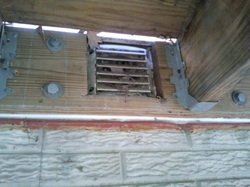 I was doing an investigation on a deck the other day. You won't believe the pictures on that one and I'll save it for another time, but this really jumped out at me. This is a clothes dryer vent. If you look closely you will see "gray areas" and "black areas". The black areas are the spaces left in this vent for air to pass. The gray areas are where it is completely clogged with lint. If the air can't pass from the dryer to the outside it takes much more electricity to dry your clothes. Secondly, and much more dangerous to you and your family, is that a clogged dryer vent can cause a fire. Imagine a flame coming out of the vent. Imagine that flame catching the wood deck on fire, then then melting the vinyl siding above, then catching the wall sheathing on fire and so on. Just how quickly can the fire department get there? The idea here - and the reminder for the week - please check your dryer vents and clean them out. If you have one of those "white flex hoses" venting your dryer you need to replace it. Those are no longer acceptable and for good reason. As it turns out, these combustible white plastic hose kits are deadly when improperly used as dryer venting and are the reason for many dryer vent fires. However, until recently they were still commonly sold as dryer venting. It was not until December 2006 that Underwriters Laboratories established UL 2158A “Clothes Dryer Transition Duct” which is an approved standard for flexible high temperature exhaust duct rated to 430 degrees Fahrenheit, that can also be used on both electric and gas dryers. Now be careful. When you go to the hardware store you may see flexible duct with a UL listing of UL 181B “Closure Systems for Use with Flexible Air Ducts and Air Connectors” however this standard is for flexible plastic and metal heating and cooling ductwork and vent fans such as in your bathroom. This standard UL 181B and these products are not for use as a dryer vent.Only flexible ductwork meeting UL 2158A can be used as dryer venting. Just because it is still sold in the hardware and home stores does not mean it is to be used as a dryer vent. They have other approved uses and you need to know the difference. When in doubt please call me. While I could build you a new home I'd rather just fix and remodel the one you are in now and should be for a long time to come if you take care of things like this. Now may be a good time to check this and also those 9 volt batteries in your smoke detectors. 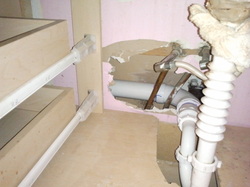 This picture was taken at a home that is under repossession by the bank. There are right ways and there are wrong ways to fix a leaking sink trap. Sink leaks can happen for a variety of reasons. One, the connections between various fitting can be loose or the rubber gaskets between have become hard and brittle and finally broken. Two, if there are metal pipe parts the will eventually corrode and crack and start to leak. All of this can be fixed, but you need to fix it properly. The picture to the left shows a sink with some newer plastic parts. These are a great substitute for the newer metal parts but still need to be installed correctly. In the upper left corner you will see the "big glob". The "big glob" is a professional trade term that refers to any material used in the wrong way to fix a simple problem. Here we see the "master craftsman" used a wash cloth and a large amount of plumbers putty (similar to play dough) to fix the leaking connection. Brilliant! This guy watched way too much "McGuyver" as a kid. He probably ran out of duct tape and wanted to have a more professional look by using plumbers putty on the sink. We won't even talk about the hole in the wall at the back of the cabinet that could have had the pipes installed better and patched up. I'll leave that to you to discuss for yourselves. Thanks for following and remember, I don't make this stuff up. It is out there and there is too much of it. This really turns off potential buyers when they see this. Because you didn't spend a few bucks to fix it right could cost you $1000s in the sale of your house just because of a bad impression. A potential buyer may be thinking, "If this kind of thing exists under the sink just how bad can the rest of the plumbing be?" I went on a call today to look at a garage door. The former owners of the house did the project shown below. I feel bad for the new owners and want to help out. This was installed by a friend of an uncle who had a racing buddy who parked in a garage one time - you get the idea here. Now don't go saying I am bashing racing. Left turn, after left turn, after left turn can be exciting. Now back to the story here.... No permits. No know-how. NO WAY!!! I gave them a price to fix it the right way and maybe even make it so you can't throw a cat through the space on the side. (of course it will be done right) Yes, the other side of the door looked just as bad. Sad thing is that they installed the door first and then did the fabulous job siding that needs to be completely removed and done over. It has been several years since they sided the house this way and all the while it has been raining, snowing and wicking moisture into the walls. I can't wait to see the damage under the siding.
Please, please, please hire a professional to do your work. It does nothing but lower the value of your home when your work is done like this. If it is something that I can't do I will get the proper trade to do the work. Not everyone knows or should do everything. Would you do brain surgery on yourself? Even I would sub that one out. |
Hitting Home BlogAuthorJon Bronemann - author of "The Hitting Home" blog. Check it out and you will see what I see everyday and why hiring a quality contractor is so very, very important. Seeing is believing and it really does "Hit Home". Archives
December 2023
Categories
All
|
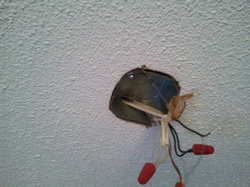
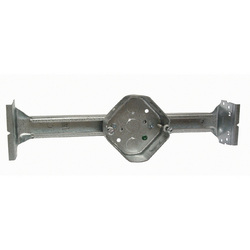
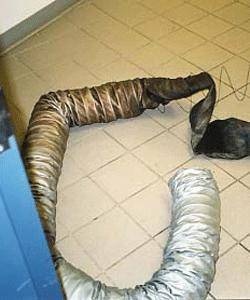
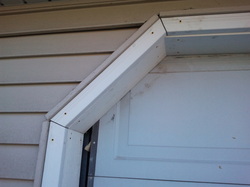


 RSS Feed
RSS Feed